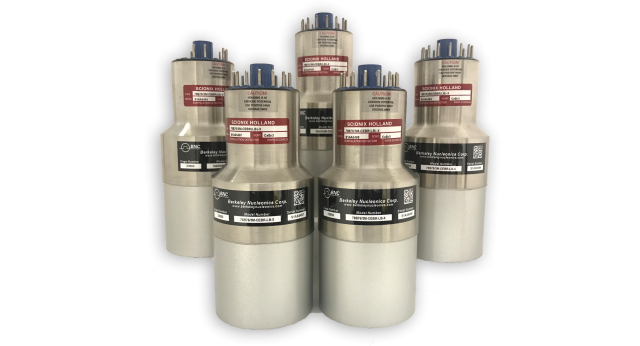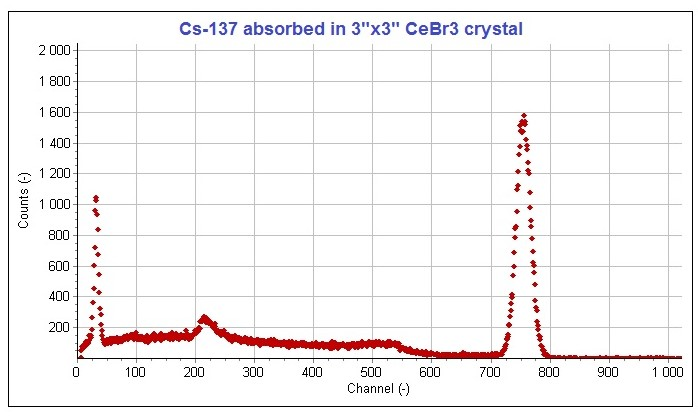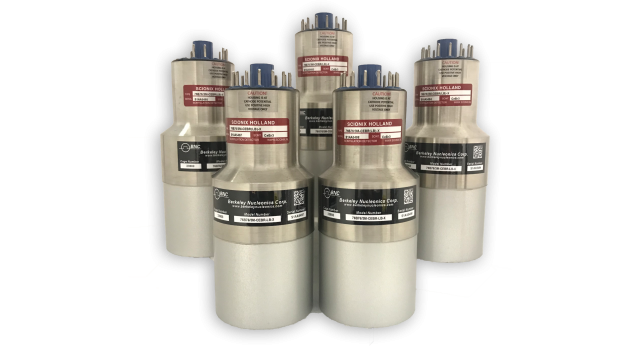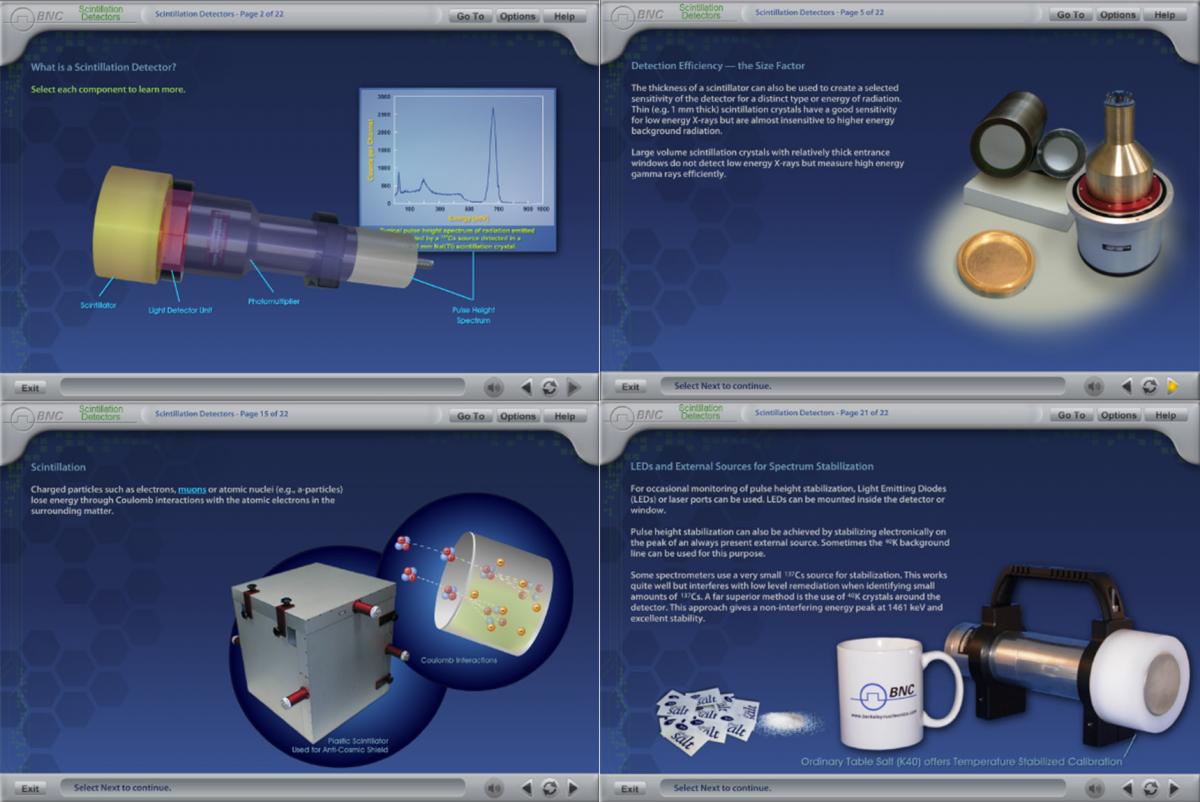
Cerium Bromide scintillators feature very high light-yields, fast response, and high-density properties. The key advantage to the material, when compared to other high-resolution scintillators, is its very low intrinsic background noise. CeBr3 is also fast without any slow components. The scintillators are hygroscopic and are available from BNC encapsulated with an entrance window, integrally coupled to a light sensor such as a PMT or SiPM, or fully integrated in detector assemblies with light sensor and front-end electronics. Sizes ranging from pixels for arrays to volumes as large as 102 mm (4 in) diameter by 152 mm (6 in) length are currently available.
Contact BNC for more information or to discuss your application. You can also tell us about your requirements by completing our brief detector Survey.
Overview
CeBr3 is characterized by its relatively high-density and its proportional response to gamma rays. The typical energy resolution provided by the material is 4% FWHM for 662 keV. Thanks to its fast light pulse rise time, CeBr3 detectors can provide sub-nanosecond time resolutions only slightly inferior to BaF2 detectors. In addition, the material exhibits fast decay times of 20 ns with negligible afterglow. With a background count as low as <0.002 c/s/cc in the Ac-227 complex (1500 to 2200 keV), CeBr3 presents a distinct advantage over other high-resolution scintillators which suffer from this or other intrinsic activity.
| Security | Resolution/Background |
| Plasma Physics | Speed |
| PALS | Time Resolution |
| Environmental | Resolution/Background |
| Space Missions | Resolution |
| Energy Resolution | 4% FWHM at 662 keV |
| Density | 5.2 g/cc |
| Emission Max | 380 nm |
| Decay Time | 18-25 ns |
| Background | 0.002 c/s/cc Ac-227 |
Typical Energy Resolution vs. Sodium Iodide
| Energy (keV) | NaI | CeBr3 |
| 30 | 18% | 20% |
| 60 | 11% | 13% |
| 81 | 10% | 11% |
| 122 | 8.50% | 8% |
| 356 | 8% | 5% |
| 662 | 7% | 4% |
| 1332 | 5.5% | 3% |
| 2600 | 4% | 2% |


Free Online Training Module - An Introduction to Scintillation Crystals and Detectors
Visit our Training page to access the module or for more information
Downloadable resources such as datasheets, firmware, software, drivers and products manuals. Alternatively, you can browse resources directly by visiting our downloads page.
• Product Datasheets
• Product Firmware
• Product Software and Drivers
• Product Manuals




